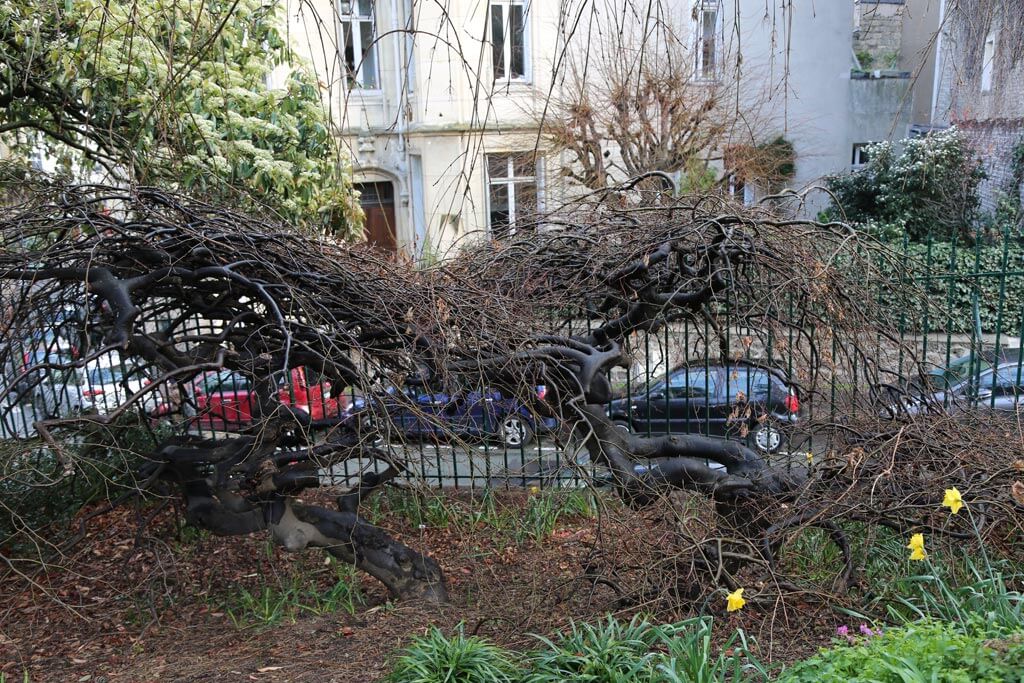Visit the Arenes de Lutece, Part of Roman Paris
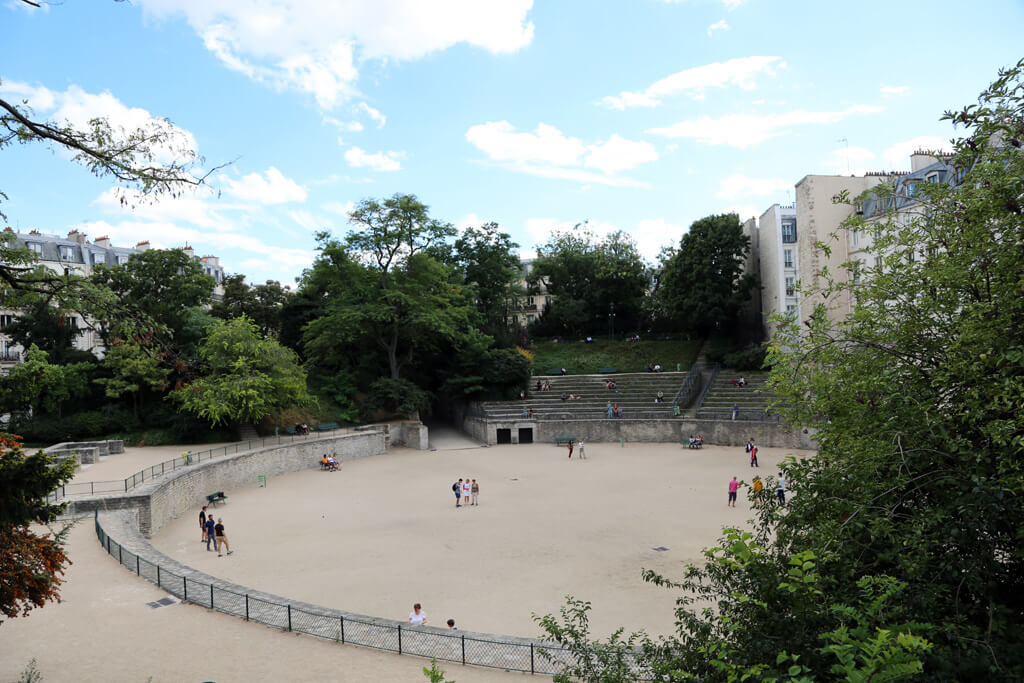
The Arenes de Lutece is one of the best-preserved Roman ruins in Paris. It is located in the Latin Quarter in Paris 5, not far from the Panthéon in Paris or the Jardin des Plantes.
The Arenes de Lutece is the oldest monument built in Paris, its construction dates back to the 1st century AD! It is in Ile de la Cité and in the Latin Quarter where the Roman Lutetia (IC AD) developed along its Cardo Maximus, the present rue Saint Jacques.
Like all the Roman cities, Roman Lutetia had a forum with the main public and religious buildings (current rue Soufflot), a couple of Roman baths, and even an amphitheater for different kinds of shows known today as the Arenes de Lutece.
Les Arenes de Lutece was an impressive building even by Roman standards. Measuring 100 m by 132 m, it is one of the largest spectacle buildings in Gaul, only smaller than Arles and Nîmes.
In Roman Paris, the Arenes de Lutece proposed spectacular animal fights, gladiatorial combats, and aquatic sports, and it could host up to 15,000 spectators (at that time Lutetia only had 20,000 inhabitants).
The Arenes de Lutece is one of our favorite secret places in Paris. Click here for the list of the most beautiful hidden gems in Paris.

The Arenes de Lutece Hours and Ticket Price
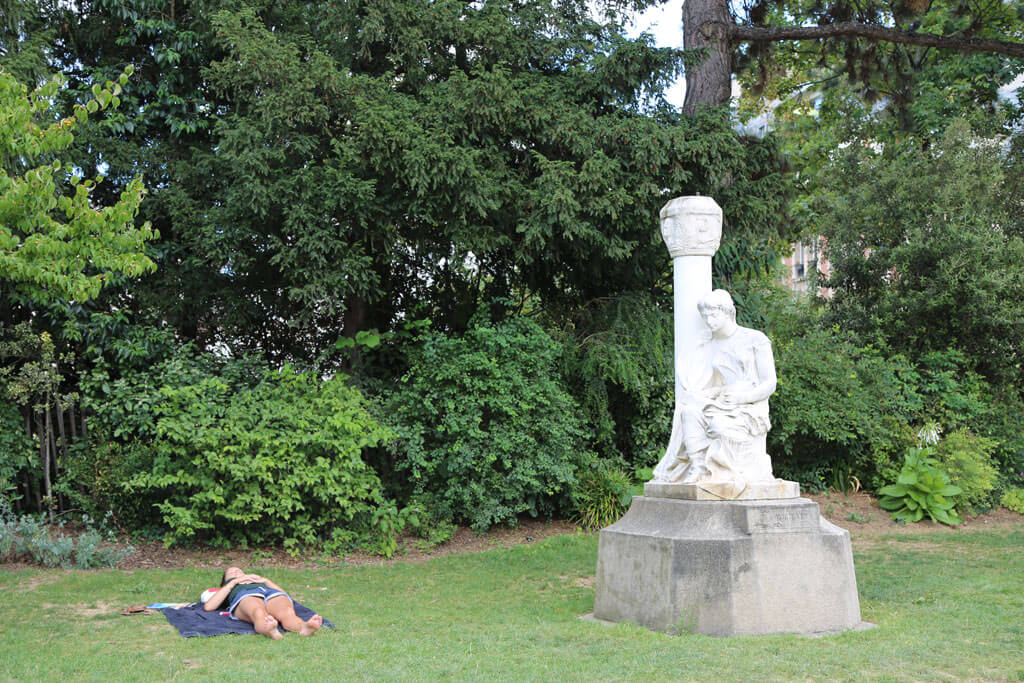
The Arenes de Lutèce is today a public park so it is free to visit. The access to the Arenes is through 47 rue Monge or through rue des Arenes or Square Capitain.
Like all the parks in Paris, the opening hours depend on the season – from 8 am or 9 am to 6 pm /7.30 pm or 8.30 pm.
In the summer, it is a good spot for a picnic on the grass or on the seats.
The Arenes de Lutèce is one of the most interesting sites to visit in Paris. We recommend visiting the Arenes de Lutèce in the following Paris itineraries:
- 1 day in Paris itinerary
- 2 days in Paris itinerary
- 3 days in Paris itinerary
- 4 days in Paris itinerary
- 5 days in Paris itinerary
- 6 days in Paris itinerary
A Peek Inside the Arenes de Lutece
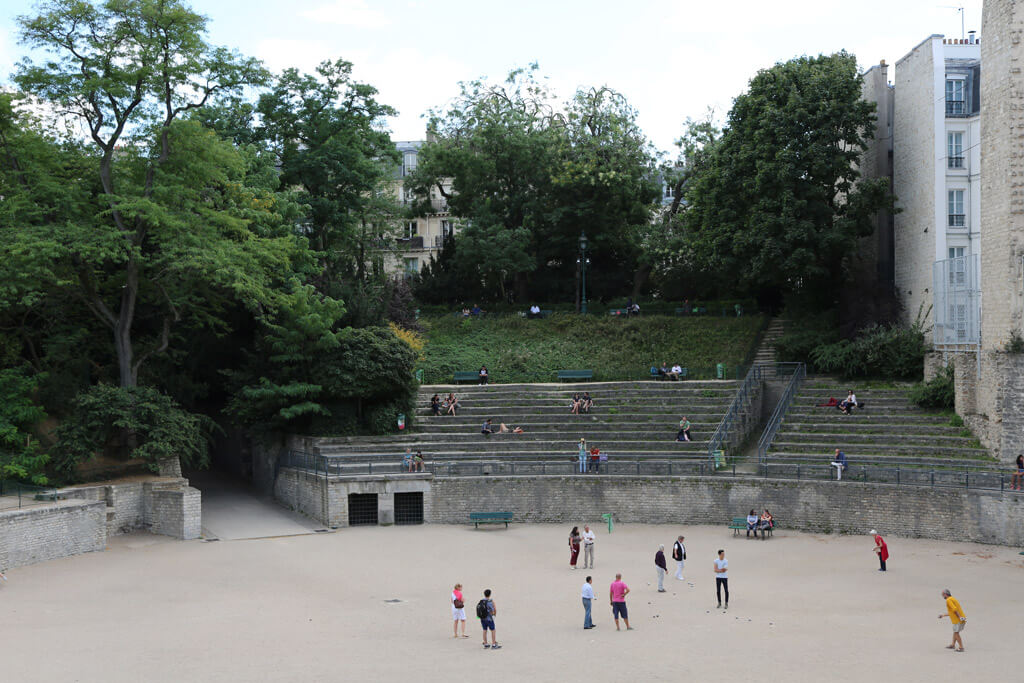
The Arenes de Lutece was restored and partially rebuilt in 1918. You can still see the location of the actors’ lodge, the stage platform, and some lapidary elements. The seating is all a product of the restoration, and a part of the amphitheater was permanently lost to building along the Rue Monge.
When the Arenes de Lutèce hosted animal fights, the beasts were kept on-site, behind the green grills that you can still see today (next to the entrance). Now, these green grills are used to store garden chairs.
Quirky and Interesting Facts About the Arenes de Lutece
The Arenes de Lutece is a Half Amphitheater
Contrary to popular belief, the Arenes de Lutece is not exactly an amphitheater, but a half amphitheater. From the seats, spectators could contemplate a magnificent panorama over the rivers Bièvre and Seine.
The upper seating was for the slaves, poor people, and women. In the summer, it was sheltered by a linen veil to protect them from the sun.
The dignitaries occupied the lower seats, closer to the show.
It is NOT the Oldest Monument in Paris But…
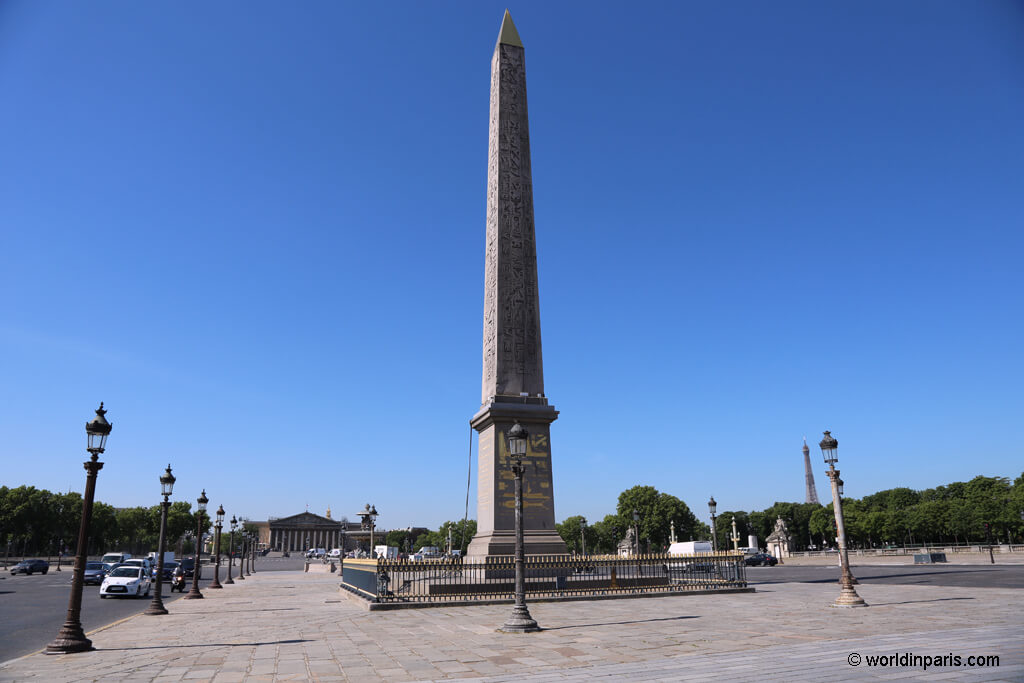
This honor goes to the Luxor Obelisk, built in the 13th century BC. However, the Luxor Obelisk was built in Egypt so the Arenes de Lutece has the honor to be the oldest monument BUILT in Paris.
The Arenes’ Acoustic is Very Good
Everybody knows that the Romans were good engineers and the construction of the Arenes de Lutece was no exception.
For a such big place with so many spectators, the actors recited their lines in raised niches which made it possible to project the sound towards all the spectators. These niches are still partly visible, they are the arcs in which now benches have been installed for walkers.
The Roman Emperor Attended all the Shows
The statue of the Roman Emperor that dominated the arena ensured the Emperor’s presence in all the shows, if not for real at least symbolically!
And when the Emperor died, Lutetia’s inhabitants replaced only the head of the Emperor, leaving the rest of the body as it was.
For Centuries, the Arenes de Lutece Was Disappeared
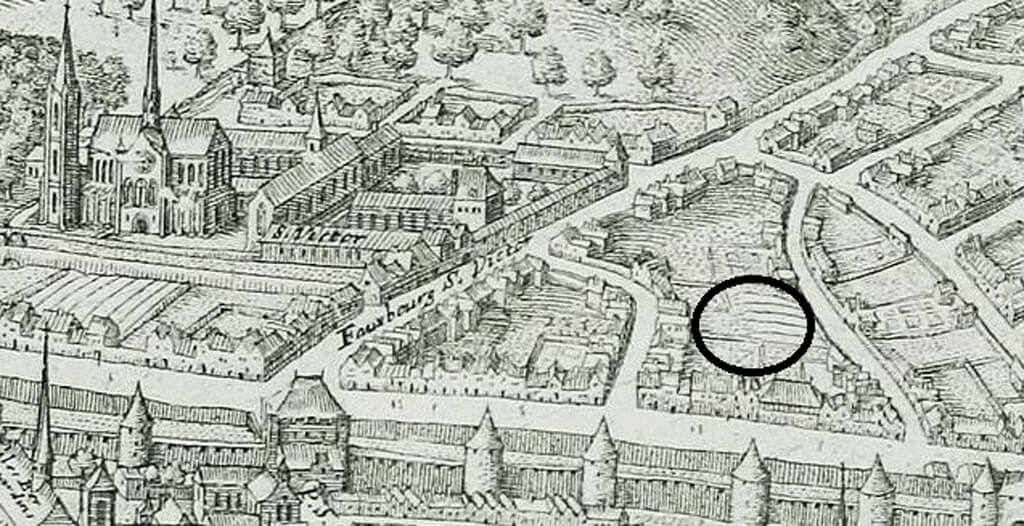
The Arenes de Lutece was active until the 3rd century AD when it was abandoned.
In the 3rd century AD the Barbarians were a thread in all Europe and around 285 they swept over Lutetia, forcing the inhabitants of the young city to protect themselves. They began to build an enclosure around Ile de la Cité (some parts are still visible at rue de la Colombe), using the stones already cut from the arena.
In ruins, the Arenes de Lutece was transformed into a necropolis, then little by little abandoned. By the Middle Ages, the site was entirely lost.
In the picture above, you can see a representation of Paris dating from 1615. The Arenes de Lutece was buried under vineyards! Only a few documents from the 12th and 13th centuries mention the Arenes but nobody was sure about its real existence.
Victor Hugo Saved the Arenes de Lutece
The Arenes de Lutèce was rediscovered in the 19th century while drilling the future rue Monge as part of Napoleon III’s radical renovation of Paris undertaken by Baron Haussmann. This was an incredible discovery: skeletons, pottery, bas-reliefs, and the mythical ancient amphitheater itself were brought to light, under the general enthusiasm.
Though construction went ahead over part of the ruins of the arena, a spirited public campaign, led by none other than Victor Hugo, led to the preservation and restoration of the site.
‘It is not possible,’ argued Hugo in a letter sent to the Major of Paris, ‘that Paris, the city of the future, should renounce the living proof that it was a city of the past.’
The Parisians saved the place but they did not know much what to do with it so the Arenes de Lutece has remained something of a neglected curiosity ever since.
From Gladiators to Pétanque Players
Today, the Arenes de Lutece is a public park, and the locals usually use the arena for playing pétanque. Even if it isn’t about sexy and muscular gladiators anymore, it’s wonderful to see it still used 2,000 years after it was built.
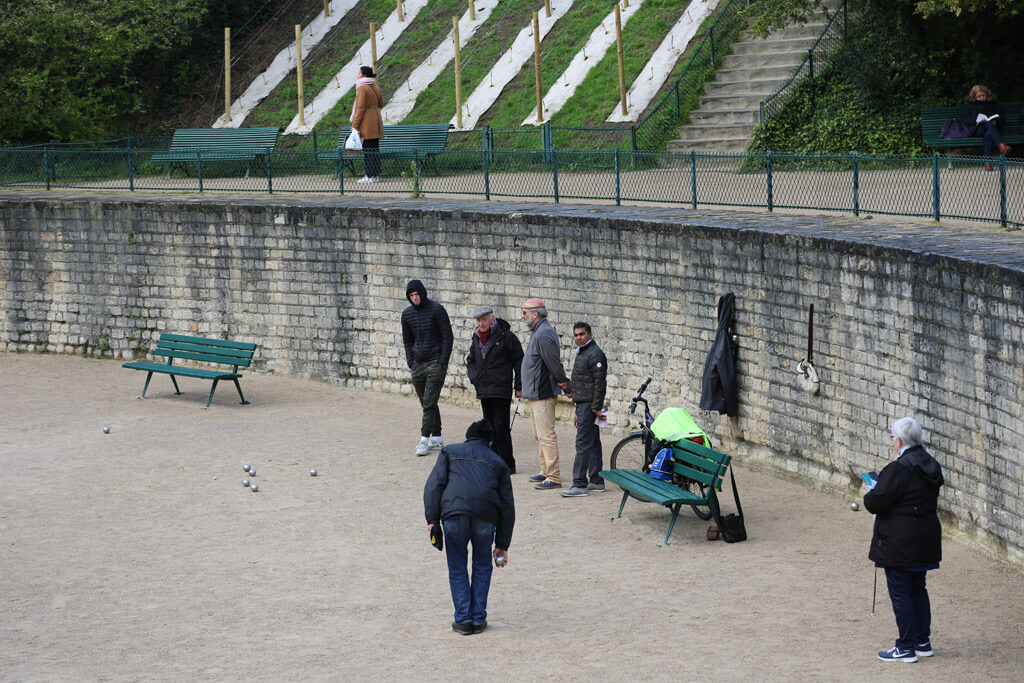
The Faux de Verzy – A Natural Curiosity at Arenes de Lutece
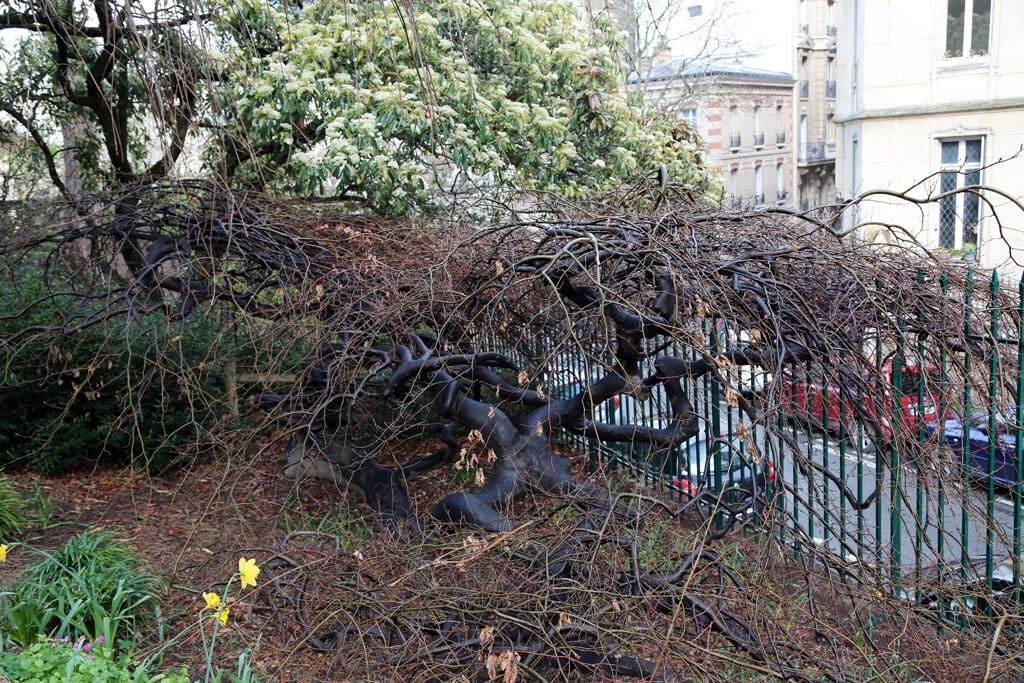
The garden surrounding the Arenes de Lutèce hosts a natural curiosity: the Faux de Verzy (1905), a mysterious and unique tree in Paris with twisted branches twisted on themselves.
Faux means ‘beech’ in old French and Verzy is its place of origin, the forest of Verzy not far from Paris.
During the summer, the Faux de Verzy looks like a little green hut but it is much more interesting in the winter when you can see the twisted branches.
Nobody knows the reason for its twisted branches: a meteorite? radioactive soil? a virus? The most valid reason seems to be a genetic mutation.
